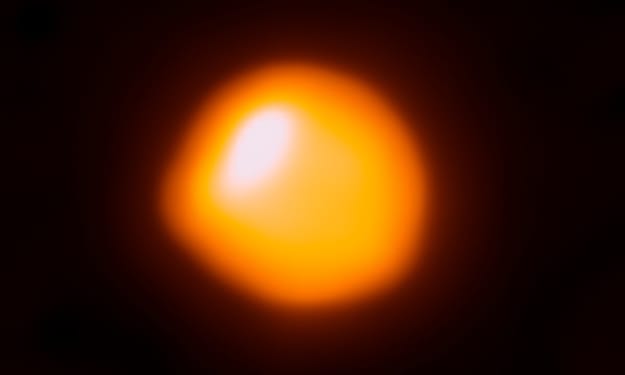What Are These Weird Radio Signals From a Nearby Red Dwarf Star?
First detected last May, astronomers just listened again to try to solve the mystery of Ross 128.

Astronomers are continuing to monitor a nearby red dwarf star after detecting unusual radio signals apparently coming from the star. It is hoped that additional observations will help to determine the source of the signals, which so far haven't been explained.
The signals were first heard on May 12, 2017 by astronomers using the Arecibo Observatory in Puerto Rico. They seemed to be coming from a nearby red dwarf star called Ross 128, which is only 11 light-years from Earth (the 12th closest star to our Solar System).
"The signals consisted of broadband quasi-periodic nonpolarized pulses with very strong dispersion-like features," said Abel Mendez, director of the Planetary Habitability Laboratory at the University of Puerto Rico.
Mendez also noted that the signals did not appear to be earthly interference, saying "We believe that the signals are not local radio frequency interferences (RFI) since they are unique to Ross 128, and observations of other stars immediately before and after did not show anything similar."
So what could be the origin of these signals? They could be from solar flare emissions, common on red dwarfs, from some other object in the field of view of the radio telescope or from a satellite in a high orbit. And, of course, what everyone hopes for - aliens.
As Mendez stated, "Each of the possible explanations has their own problems. In case you are wondering, the recurrent aliens hypothesis is at the bottom of many other better explanations."
The signals in May were observed for about 10 minutes, and were 250 MHz centred at about 4.7 GHz on the radio spectrum. Solar flares of the type common to red dwarfs tend to be lower on the spectrum than the signals seen and usually last for about 1-2 minutes. As for satellites, Mendez also said that "we have never seen satellites emit bursts like that."
At the moment, those are still regarded as the three best possibilities however. Most artificial signals would be expected to be narrow in bandwidth, not broad, which is what SETI is looking for. But all of this right now is still conjecture.
This past Sunday, Mendez and his team had the first opportunity to look for the signals again, as well as observing another red dwarf, Barnard's Star. The Green Bank radio telescope and SETI's Allen Telescope Array also joined in the search this time. Mendez has said that the results should be available later this week.
"Confirmed! We have the data of #Barnard's Star and #Ross128," Mendez tweeted.
As has happened before, it is most likely that the signals were natural in origin or some kind of satellite interference, but we just don't know yet.
In reference to the famous mysterious "Wow!" signal heard once in 1977 but never repeated, Mendez noted this about Ross 128 on Twitter:
"Ha, we have a Wow! Signal and now a Weird! Signal."
Mendez elaborated a bit more in Newsweek:
“That’s precisely the mystery. What usually happens is you are able to recognize easily what is astronomical and what is local interference. That’s why there’s never normally a mystery. Most of the time it’s just local interference. But what’s happened here is the signal could be easily interpreted as something astronomical or interference. We were not able to recognize either way. When you recognize that, which one it is, then you have a second mystery. Because why is the source emitting something like that? If you try to use astronomical explanations, it’s hard, because we’ve not seen this before. If it’s a local source, we need to work out what sort of local source could be making it, as we’ve never seen anything like it before. Either way, you have a mystery… You need to recognize any new [phenomenon] to learn about it so you can recognize it in the future. You need to know.”
Hopefully more will be known later this week, but it may take longer to go through all of the data and compare the observations from the various radio telescopes. Until then, however, it is still a very interesting mystery, even if aliens are not involved (or are they?).
About the Creator
Paul Scott Anderson
Paul is a freelance space writer and blogger who currently writes for AmericaSpace and Vocal. His own blog Planetaria is a chronicle of planetary exploration.
paulscottanderson.ca
planetaria.ca






Comments
There are no comments for this story
Be the first to respond and start the conversation.